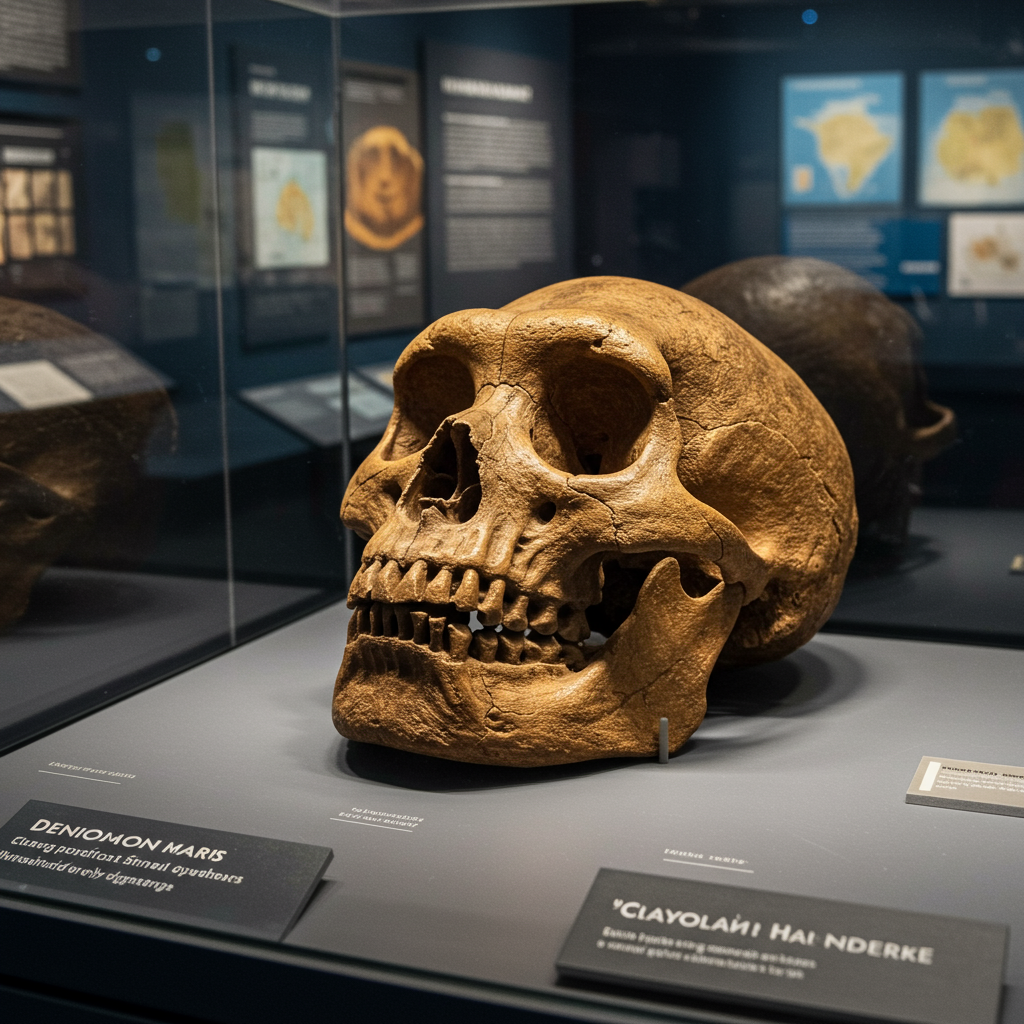Earth’s cosmic neighborhood recently welcomed a remarkable visitor from across the galaxy: Comet 3I/atlas. Designated provisionally as A11pl3Z upon its initial sighting, this object represents only the third confirmed interstellar interloper detected passing through our Solar System. Quickly captivating astronomers worldwide, early data immediately hinted that 3I/ATLAS was profoundly different from its two predecessors, ‘Oumuamua and 2I/Borisov. Now, groundbreaking research points to an astonishing origin for this fast-moving celestial body – a distant, ancient region of the Milky Way galaxy itself.
The swift follow-up and analysis of Comet 3I/ATLAS were made possible, in part, by fortunate timing and innovative scientific work. Just days before the comet’s discovery, Matthew Hopkins had successfully defended his doctoral thesis focusing on creating sophisticated models of interstellar objects traversing our galaxy. His supervisor, Professor Chris Lintott, anticipated some time off for Hopkins to refine his work. Instead, the universe delivered a perfect, unexpected subject right to their doorstep.
Decoding the Galactic Visitor: A Novel Model
Hopkins, now the lead author on the key paper detailing the comet’s origin, eagerly applied his brand-new modeling techniques to 3I/ATLAS. This wasn’t just academic; it was the first real-world test of four years of theoretical research. Using this advanced model, Hopkins, Lintott, and their collaborators were able to trace the comet’s trajectory back in time and map its probable birthplace. The findings were immediately compelling: 3I/ATLAS appears to hail from a galactic neighborhood entirely distinct from those theorized for ‘Oumuamua and Borisov.
Professor Lintott highlighted the power of their predictive tool. Their model suggests a truly staggering number of interstellar objects exist across the Milky Way – an estimated 10²⁷, or a billion billion billion. Detecting just three of these vast population allows scientists to use the model to identify which characteristics of objects like 3I/ATLAS are typical and which are unusual or noteworthy. This comet offered several intriguing data points right away.
Speed, Color, and a High-Flying Orbit
One of the most striking initial observations about Comet 3I/ATLAS was its incredible velocity. It zips through space at roughly 57 kilometers per second (36 miles per second). This speed is nearly double that of ‘Oumuamua, which moved at about 26.33 km/s (16.36 mph), and notably faster than Comet Borisov’s speed of around 32.2 km/s (20 mph). While remarkably fast compared to previous visitors, the new model indicates that such high velocities are actually within the expected range for certain types of interstellar objects predicted to exist.
Beyond speed, observations provided clues about the comet’s physical nature. Data from the European Southern Observatory’s (ESO) Very Large Telescope (VLT) suggested 3I/ATLAS possesses a much redder hue than typical comets found within our Solar System. Its color profile is more reminiscent of Centaur asteroids, a population of icy bodies orbiting between Jupiter and Neptune. Another research paper acknowledged these differences, especially when compared to ‘Oumuamua and Borisov, while also noting some similarities to certain Solar System objects.
The crucial insight into 3I/ATLAS’s origin came from analyzing its unique trajectory relative to the galaxy itself. The comet displays a significant “vertical velocity.” This term describes how quickly it moves up or down relative to the relatively flat plane where most of the galaxy’s stars (including our Sun) reside.
Tracing the Comet to the thick Disk
Our Sun and the spiral arms of the Milky Way are located within the galactic “thin disk.” This is a dense, flat structure containing younger and middle-aged stars. However, spiral galaxies also possess a less dense structure called the “thick disk.” This region extends above and below the thin disk and is predominantly populated by older stars.
The high vertical velocity of Comet 3I/ATLAS is a strong indicator of its origin. Based on this characteristic, the new model developed by Hopkins and Lintott strongly predicts that the comet originated from a star located within the thick disk of the Milky Way.
Professor Lintott emphasized the significance of this finding. If confirmed, 3I/ATLAS would be the very first interstellar object astronomers have definitively traced back to this specific, ancient part of our galaxy. The origins of ‘Oumuamua and Borisov, while interstellar, appear linked to different regions. Seeing an object arrive from the thick disk provides a novel window into the composition of material existing outside the galaxy’s main plane.
An Ancient Artifact Older Than Our Sun
Tracing the comet to the thick disk implies profound implications for its age. Stars in the thick disk are typically much older than those in the thin disk. Consequently, the researchers estimate that Comet 3I/ATLAS likely formed around an old star and has been drifting through interstellar space for an immense duration. There’s even a two-thirds chance that this cosmic traveler is older than 7 billion years – a timeframe exceeding the entire age of our own Solar System.
This great age offers a potential explanation for the comet’s observed reddish color. Objects spending billions of years exposed to the harsh environment of interstellar space, particularly cosmic rays, undergo surface changes that can cause them to appear redder over time. While the VLT color data seemed to fit this explanation, Professor Lintott noted it warranted further verification.
The new model also presents a testable prediction based on the comet’s potential thick disk origin. The hypothesis suggests that older stars tend to eject interstellar objects that are rich in water ice. As Comet 3I/ATLAS continues its journey closer to the Sun, astronomers anticipate observing significant cometary activity – the release of gas and dust forming a coma and tail – driven by the sublimation of this predicted water content. The next crucial step for scientists is detailed chemical analysis as the comet brightens.
Opportunities and Challenges in Detection
The discovery of just three interstellar objects so far might seem small compared to the predicted population. Scientists estimate that at any given moment, approximately 10,000 interstellar objects could be located within the orbit of Neptune. However, most of these objects are likely too faint or small to be detected by current telescopes. They simply aren’t bright enough to stand out against the vastness of space.
The detection of Comet 3I/ATLAS itself highlights the evolving capabilities of astronomical surveys. It was initially spotted by the ATLAS sky survey on July 1st. Subsequent checks of archival data from ATLAS (dating back to June 25-28) and the Zwicky Transient Facility (June 14-21) helped refine its highly eccentric, unbound orbit. While initial eccentricity estimates were remarkably high (over 10), refined calculations still place it clearly above 6 – significantly greater than both ‘Oumuamua (>1.20) and Borisov (>1), leaving no doubt about its interstellar status.
As new, more powerful telescopes come online, such as the Vera C. Rubin Observatory which has already demonstrated the ability to discover thousands of new asteroids quickly, the rate of finding these faint interstellar visitors is expected to increase dramatically. This will provide even more data points to test models like the one developed by Hopkins and Lintott and refine our understanding of these galactic wanderers.
Interstellar Visitors and the Formation of Worlds
Studying these rare interstellar objects offers more than just insight into distant star systems. There’s a fascinating scientific theory that suggests material carried by interstellar objects might get incorporated into the clouds of gas and dust that collapse to form new stars and planets. This raises the intriguing possibility that interstellar material could play a role in “kickstarting” the process of planet formation. Could even our own planet, Earth, have potentially incorporated materials delivered by such an object billions of years ago? It’s a compelling idea that underscores the profound connections across the cosmos.
For the astronomers involved, these discoveries represent the heart of scientific exploration. Professor Lintott captured the excitement, describing the process as fulfilling the childhood dream of astronomy: finding something new, pointing telescopes at it, analyzing the data, and engaging in passionate scientific debate. The paper detailing the origin work on Comet 3I/ATLAS has been submitted to The Astrophysical Journal Letters and was anticipated to appear on the ArXiv preprint server shortly after the initial reports.
Despite the excitement, studying 3I/ATLAS presents challenges. Its closest approach to the Sun is expected in October, potentially passing just inside or outside Mars’ orbit. While it will brighten, Earth will be poorly positioned for viewing during this peak activity phase, being on the opposite side of the Sun. Importantly, its calculated trajectory poses no threat to Earth, with its closest pass remaining over 50 million kilometers (31 million miles) away from our planet’s orbit. Nevertheless, astronomers have several months to gather crucial data as the comet passes through the inner Solar System.
Frequently Asked Questions
What makes Comet 3I/ATLAS different from previous interstellar visitors like ‘Oumuamua and Borisov?
Comet 3I/ATLAS stands out due to several unique characteristics identified shortly after its discovery. First, it moves at a significantly higher speed (around 57 km/s) compared to ‘Oumuamua (~26 km/s) and Borisov (~32 km/s). Second, observations suggest it is much redder in color than typical Solar System comets. Most significantly, new research using an advanced model indicates that 3I/ATLAS originates from the thick disk of the Milky Way, a distinctly different and older region of the galaxy compared to the likely origins of the previous two interstellar objects. Its orbital eccentricity (>6) is also notably higher.
What is the Milky Way’s thick disk, and why is Comet 3I/ATLAS’s origin there significant?
The Milky Way galaxy, like many spiral galaxies, has a ‘thin disk’ where most stars (including our Sun) and the spiral arms are located. Above and below this thin disk is a less dense, more extended structure called the ‘thick disk’, which contains predominantly older stars. Comet 3I/ATLAS’s origin in the thick disk is significant because it suggests the comet formed around an old star, making it likely much older than our Solar System (potentially over 7 billion years). Furthermore, if confirmed, 3I/ATLAS would be the first observed interstellar object definitively traced back to this specific, ancient galactic environment, providing astronomers with a unique sample from a previously unexplored cosmic neighborhood.
How was Comet 3I/ATLAS discovered, and what are the next steps for studying it?
Comet 3I/ATLAS was initially detected by the ATLAS sky survey. Astronomers subsequently found earlier data from ATLAS and the Zwicky Transient Facility that helped calculate its highly eccentric, unbound orbit, confirming its interstellar nature. Next steps involve continued observation as the comet approaches the Sun. Researchers predict it should be water-rich based on its thick disk origin, so astronomers will be looking for significant cometary activity (coma and tail) as it warms up. Observing its composition, activity level, and refining its orbit using telescopes like the VLT will provide crucial data to test the model’s predictions and learn more about this ancient visitor, despite the challenging viewing geometry during its closest approach.



